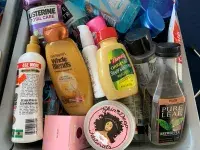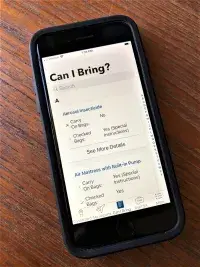ALBANY, N.Y.—The traditional spring break travel period has arrived at Albany International Airport (ALB) and Transportation Security Administration (TSA) officers are ready for the increase in passengers. However, passengers who haven’t traveled recently are somewhat “rusty” in terms of remembering security checkpoint protocols.
Due to the increase in travel volume, travelers are advised to get to the airport early. It’s going to be more crowded than it has been in quite a while with plenty of travelers who are flying for the first time in a very long time.
“We anticipate that average daily travel volume will increase during spring break, and we want to make sure the public is well aware of this increase and comes to the checkpoint two hours prior to their flight departing,” said Bart R. Johnson TSA’s Federal Security Director for Upstate New York. He also reminded travelers to wear a mask.
Face masks continue to be required throughout all domestic transportation modes through April18, including inside airports. Since the implementation of the face mask mandate in February 2021, there has been near-100 percent voluntary compliance at airport checkpoints and authorities have reported similar levels of compliance in the surface and rail transportation modes, which together safely transport millions of individuals daily.
TSA officers will be wearing gloves and masks. Travelers will see acrylic shields along the checkpoint lanes to help reduce cross-contamination. TSA officers will change their gloves after every pat-down.
“We ask travelers do to their part by ensuring that they do not have any prohibited items with them at the checkpoint, and instead pack some extra patience,” Johnson said.
TSA officers are seeing a lot of prohibited items at checkpoints, which results in more bag checks that can slow checkpoint lines.
“Advance planning and packing properly is key to a smooth security checkpoint experience. We are seeing a lot of people who perhaps haven’t traveled in a long time and they are either unfamiliar with or forgetful about what can and cannot go into a carry-on bag,” Johnson said. “People who have put off traveling during the earlier days of the pandemic are eager to visit family and take vacations. However, many are getting stopped at our checkpoint because they have brought prohibited items with them.”
The most common prohibited items that travelers bring to checkpoints are liquids, gels and aerosols that are larger than the acceptable limit of 3.4 ounces—shampoo, toothpaste, beverages, sun block, hand lotion, face cream, shaving cream, mouthwash and other toiletries. Each passenger may carry liquids, gels and aerosols that are 3.4 ounces (100 ml) or less through a checkpoint as long as those items fit into a one quart-sized, resealable bag. This is known as the 3-1-1 bag. Larger containers of liquids, gels and aerosols can be transported in checked baggage.
The exception to the 3-1-1 rule is that due to the pandemic, TSA is permitting travelers to bring up to one 12-ounce container of liquid hand sanitizer per passenger in carry-on bags until further notice. Passengers can expect that these large liquid hand sanitizers will need to be screened separately, which will add some time to their checkpoint experience.
People should “take an extra minute or two while packing their carry-on bags to make sure that they aren’t packing prohibited items inside,” Johnson advised. “We are seeing hundreds of oversized liquids, gels and aerosols at the checkpoints every week. Not only does this slow down the security checkpoint process, but it also results in a bag check. Keep in mind that we are still in a pandemic, the idea is to reduce touchpoints, and a bag check does the opposite,” he said.
TSA officers are seeing travelers arrive at the checkpoint with bottles of water, juice, energy drinks, coffee and soda. The officers will give passengers the choice to exit the security checkpoint to drink their beverages in the terminal or allow the officer to dispose of it. Travelers may bring empty bottles or insulated flasks through checkpoints and fill them on the secure side of the checkpoint.
TSA offers several ways for travelers to find out if an item is permitted in a carry-on bag, checked bag, either or neither. The TSA web site has a feature on the homepage called “What can I bring?”. Type in the name of the item to learn if it should be packed in a checked bag or carry-on bag. The same handy feature is available on the free downloadable MyTSA app.
Travelers also can get assistance with their questions by tweeting questions and comments to @AskTSA or via Facebook Messenger, weekdays from 8 a.m. to 6 p.m. Travelers can also call the TSA Contact Center at 866-289-9673 from 8 a.m. to 11 p.m. or 9 a.m. to 8 p.m. on weekends and holidays.


